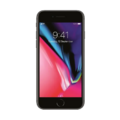More actions
| IPhone 8 | |
|---|---|
| Manufacturer | Apple |
| Code name | |
| Release date | |
| Device type | Phone |
This article is a stub. You can help Repair Wiki grow by expanding it
Guides
Explanatory Guides
| Type | Difficulty | |
|---|---|---|
| Parts that are serialized on iPhones | Troubleshooting/Diagnostics |
Repair Guides
Create a Guide
Device pictures
PCB pictures
Please consider contributing pictures to this section!
Reference measurements (also schematics if available)
-
iPhone 8 - Known Good Mechanic Lightning Readings
More Information/External Sources
You can manually link to external sources for additional information that might not fit here but are useful such as BIOS image dumps, firmware, etc!


